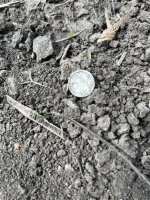lokiblossom
Bronze Member
- Thread starter
- #501
Loki, my friend, I as well as you and everyone else. do not know how the coir found in Oak Island got there beyond supposition and speculation, but what all know, including you,is that the coirsample is not evidence or proof in anyway that the Templars brought it to Oak Island.
No, unless you or one of your disciples comes up with some viable information otherwise, it is evidence of a Knights Templer presence on Oak Island!
Cheers, Loki






